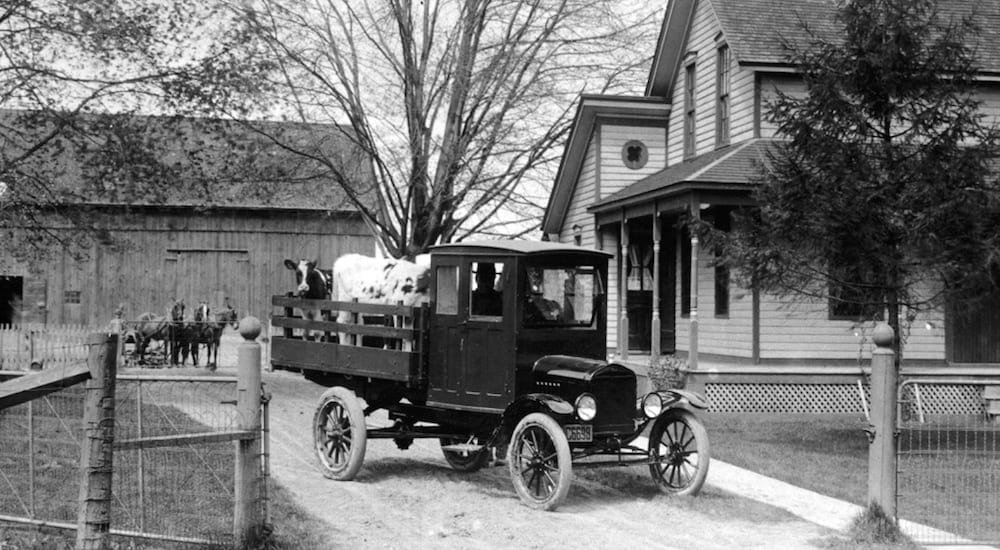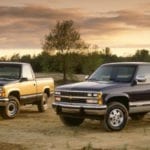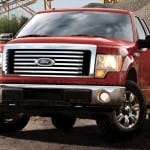Never take for granted that, by searching Ford trucks, you become part of a storied American tradition. In late July of this year, Ford celebrated the 100th anniversary of the Model TT, the very first Ford Truck to roll off the assembly line.
Looking Back
A true innovation, the Model TT marked the first time where a truck wasn’t built upon the stretched wheelbase of a car. Inspired by such conversions (many of which had been undergone by his own Model T), he crafted a one-ton chassis with a longer, more resilient frame, rear axle, and suspension.
Built to be a truck from the ground up, the result had a lasting effect on the agricultural economy. Through improved versatility, farmers could tackle any task more efficiently. And if their old Model T had outlived its usefulness, Ford offered a kit that they could purchase (for $59) which would convert it into a more-functional tractor.
This was the beginning of America’s love of work trucks, and its specific love affair with Ford. From the early innovation of the the more stylized, 1.5 ton Model AA (which replaced the TT in 1928) to the introduction of the Flathead V-8 in 1932, there was no absence of innovation in Ford truck design. Americans took notice (even during The Great Depression) having purchased over four-million Ford Trucks by the time that production of civilian vehicles had ceased in 1941, due to WWII. Shifting to military support vehicles, Ford would produce everything from ambulances to covered personnel carriers and amphibious vehicles tested (where else?) but the Detroit River.
And in 1948, the F-Series pickup was introduced to the world. With a streamlined design, it would contribute to a relaunch of post-War American idealism. And through continual evolution, the F-Series would serve as a staple, as well as a standard, of American truck design. In fact, the Ford F-Series has now been the top-selling vehicle for the last four decades.
Ford Trucks in Popular Culture
To quote Mark Phelan of the Detroit Press, “The only thing more American than a Ford truck is a bald eagle perched on top of Ford truck.” As an enduring symbol of American Spirit, Ford trucks have been prevalent within our popular culture.
First, look to the commercials. Charlie Brown peddled Ford back in 1964, and has been succeeded by the likes of comedian Denis Leary, country singer Toby Kieth, and (for quite some time now) ‘Dirty Jobs’ host Mike Rowe.
From the 1951 Ford F1, recognizable within the opening credits of ‘Sanford & Son’ to Daryl Dixon’s 1973 F-250 on ‘The Walking Dead,’ Ford has been there. Even the revamped television phenomenon ’24,’ which returned with its new protagonist, renewed its relationship with Ford as a corporate sponsor – reflected in the inclusion of Ford vehicles throughout the series.
While the same could be said of most any car manufacturer (especially any of the ‘Detroit 3’), one fact remains: Ford trucks remain a constant within our television and film viewing. And while a large percentage of depictions are based around the working class, the evolution of Ford trucks have been mirrored by the evolution of their on-screen use. No longer exclusive to the likes of cowboys and ranch hands, the on-screen representation of Ford Trucks mirrored the wider diversity of today’s truck buyers. Times have changed, and so has Ford.
Although…
(Speaking of the ‘Detroit 3’) I can’t help but laugh, thinking back to a 1985 television spot for Ford pickups. Having previously been shown driving up a hill of rocks carrying a Chevy pickup laid across its bed, the follow-up commercial showed a Ford truck (once again) carrying a Chevy pickup laid across its bed, except now it was also pulling a Dodge pickup.
Complete with gravelly voice-over, it was a perfect representation of the “Built Ford Tough” motto coined in 1977. And while the testosterone-fueled ‘hauling a Chevy, pulling a Dodge’ campaign hardly aged well, it’s a testament to the confident manner in which Ford has always been able to market itself.
Proven Effective
The statistics speak for themselves. Not only is the F-Series the best selling truck lineup , but it is America’s best selling vehicle of any kind. And May’s numbers on domestic automotive sales (placing GM at second, with Toyota and Fiat-Chrysler following behind) show no immediate sign of change.
Looking Forward
And while the brand’s longevity and the media’s continual reinforcement of Ford as America’s truck are enough to maintain it, the manufacturer never seems to rest on its laurels.
Reinventing the light-duty F-150 with a high-strength aluminum-alloy body made it resistant to both dents and corrosion, and reduced the vehicle’s overall weight by 700 LBS. Not only did this improve its power-to-weight ratio and fuel-efficiency, it further improved upon the already best-in-class payload and tow ratings.
You can expect to find similar attributes in the SuperDuty models, which average a 350 LB reduction in overall weight from the change to aluminum-alloy. From the F-250 to F-450XL, there is a wealth of configuration options available, to make sure that you get the perfect truck for the demands of your job or lifestyle.
More Than Just a Work Truck
When Henry Ford rolled out his Model TT, he knew exactly what he was doing; but he never could have anticipated the result of his innovation. Designed for labor, today’s Ford trucks aren’t just bought by America’s workers.
Some are certainly headed to the job site, while others are headed to the office. They pick-up bed-loads of gravel, and drop children off at soccer practice. Driven proudly by gravelly-voiced men and the most modern of women, Ford’s continual reinvention of itself is an extension of America’s ability to do the same. Ever changing, yet same as it ever was.




